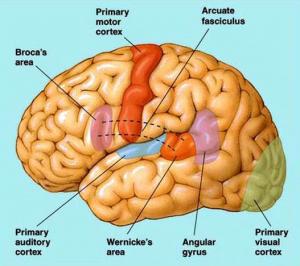A very interesting article by Annie Murphy Paul appeared in the New York Times yesterday. It was titled “Your Brain on Fiction” and deals with how the written word affects our brains. In the article, she talks about several studies done with functional MRIs (fMRI). A functional MRI looks at brain activation by revealing changes in blood flow. If a certain area of the brain is stimulated, then that area will receive increased blood flow and this can be measured with a functional MRI. Such testing is currently being looked at to perhaps develop a more reliable lie detector. It appears that different parts of the brain activate when someone is remembering an event as opposed to making it up. Hopefully, this technique will help to distinguish truth telling from fabrication, but that’s another story.

The areas of our brain that are concerned with language processing are predominantly Broca’s area and Wernicke’s area and their interconnecting neurological tracts. These areas are activated when we read. But it is also been discovered, that depending on the word or words read, other areas of the brain are also activated. For example, the word “cinnamon” not only activates the above language areas but also the olfactory (smell) area of the brain. This also seems to happen with words such as perfume and coffee but not with words such as chair or key, since these have no associated sensory meaning.
Even more fascinating is that there is evidence that metaphorical terms cause more brain activation then do more concrete ones. Researchers found that saying a singer had a “pleasing” voice did not cause the same activation as saying the singer had a “velvet” voice. Of course the word “velvet” is more metaphorical and sensory than is the word “pleasing,” which tends toward the generic. Similarly the the term “strong hands” causes less activation than the term “leathery hands,” where again a difference in sensory connotation is obvious.
For the writer, this means that using more metaphorical terms will impact your reader on a more emotional and sensory level than using simple concrete terms. I guess you could say that vivid writing is more “stimulating” then bland writing.
